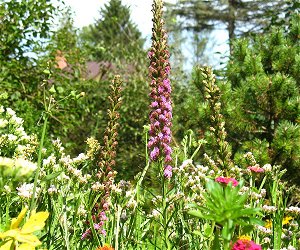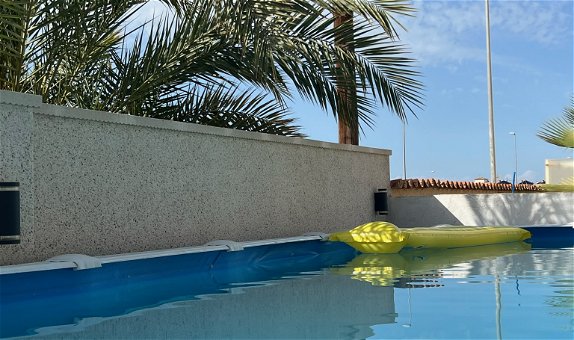Many people enjoy a glass or two of wine but are sometimes put off by what can be referred to as “wine snobs”. This Guide is aimed at those wishing to learn a bit more without going overboard and to help avoid confusion when selecting a wine either in the shops or in restaurants.. In five years in Spain I have enjoyed wine as cheap as 1€ a bottle from a Supermarket and the most I have paid is 8€ for a bottle. In bars that serve food you can expect to pay around 5 or 6€ while around 15 to 20€ is common in restaurants. Whatever your choice a little more information may be helpful and lead to a more enjoyable experience.
Wine is a natural product: Fermentation is a process during which the natural sugar in the grape turns into alcohol to become wine.
There are many different types of wine: Any palate can find remarkable differences among different wine styles. Grape variety, weather conditions, the soil or the producer’s know-how, can make the difference.
Pairing wine and food. : Marrying wine and food is a kind of art, but that should not prevent everyone from having a go! The best thing you can do is to practice as often as possible. The basic idea is that food should help reveal the wine’s aromas and vice-versa. Wine and food should not compete with one another but be complementary.
Wine tasting: You do not need to be a wine buff to taste wine. Just prepare your senses to make full use of them and describe what you feel. Do not worry if at the beginning most wines seem alike, time and practice will help you to distinguish the wines’ characteristics.
How to choose the best wine: Buying expensive wines guarantees a certain quality. However, the quality of a wine is not proportional to its price. I would suggest you choose your wines according to your taste and to the occasion. It may sound obvious but many people simply take the bottle on offer and do not think much further.
Types of wine.
Still wine: Red, White, Rosé. No bubbles and less than 15º alcohol.
Sparkling wine: : Cava, Champagne and others. The second fermentation gives wines their bubbles.
Fizzy wine: Bubbles are not naturally produced. Gas is added as in fizzy drinks.
Fortified wines: They all have alcohol added at some point ranging 16º-24 º.
Dessert Wines: At the best when the balance between natural sugar and acidity allows them to age well.
Serving temperatureRed Wine: Between 16º and 18º C. If it is warm you may need to cool it down in an ice-bucket.
White wine and rosé: Between 12º and 16º C. Keep it in the fridge and take it out just before serving it.
Article continues below
Sparkling wines: At around 8º. Serve chilled and keep in an ice-bucket.
Fortified wines (such as Port): 16º -18º
Dry Sherry: 12º - 13º
Fine Dessert Wine: 11º
Elements impacting wine quality.Soil: It gives the wine part of its character.
The climate: The warmer the weather the more body and alcohol content the wine is likely to have. The cooler the weather, the more refreshing and acid the wine will be.
The grape variety: Grape variety greatly determines the wine. Along with the grape variety itself, we need to consider other things such as the age of the vine.
Wine making: Once the grape has been harvested, the oenologist’s savoir-faire is vital to produce a quality wine. He needs to master the fermentation temperature, the filtering and clarification processes, or the type of oak selected for ageing.
Wine Ageing: The wine obtains tannins and complexity from being stored in oak barrels. The wood has tiny pores that allow oxygen in and allows the wine to age. Only full-bodied wines can bear long ageing periods. In the bottle, wines can evolve for a long time, always depending on the structure of the wine as not all wines can age.
Varieties Of Wine Grapes.
When
it comes to learning about Spanish wine, it is important to get to
know the different grape varieties that are grown in Spain as well as
their geographic distribution.
Grape names are seldom used in Spain. In most restaurants or wine shops, wines are classified according to their origin. Spanish wine regulations limit regions, which means that in order to understand how a wine will be you should know something about that particular region. More and more producers do however include the name of the grape in their labels. Below I have listed the most important and common Spanish grape varieties.
In Spain, wines are classified into different wine regions, each with their own set of wine laws and quality standards. Currently, Spain has 69 major wine regions, the more correct term being “Designation of Origin” (D.O.).
It is likely that you may be familiar with at least a few of them. Some of the most well-known wine regions of Spain are Rioja, Ribera del Duero, Penedés, Navarra, Rueda, Cava, Rias Baixas, Jeréz, & La Mancha.
Be careful not to mix up the name of the grape with the name of the wine region. It is quite common for people to confuse them. You should know that when asking for a “Rioja” you are referring to the Designation of Origin. However, if you order an “albariño” wine, for example, you are naming the grape variety. The wine region is called Rias Baixas. Most people around the world would not necessarily recognize these names but they are the main designation of traditional Spanish wine.
Article continues below
Red Varieties of Grapes
Tempranillo
Tempranillo is the best known quality Red Wine Grape in Spain. “Temprano” means early in Spanish, and the name Tempranillo refers to the early time the grape has been traditionally harvested. Tempranillo is also known as Tinto Fino in Ribera del Duero, Cencibel in La Mancha and Ull de Llebre in Catalonia. Its home is however La Rioja. Tempranillo produces fresh and fruit young red wines but it shows its best when oak aged.
Garnacha ( Grenache )
A grape of Spanish origin despite most people associate it with the Rohne valley in France. This grape can be found in nearly all wine countries around the world. In Spain, it is found in the Northeast area, La Rioja, Navarra, Aragón and Cataluña. In Rioja it is normally blended with Tempranillo. This grape can produce fruity wines, with raspberry aromas.BobalFound mainly in Valencia, Bobal wines are full bodied and colourful. Their quality has witnessed a very important increase in the last years.
Monastrell
It
is the typical grape of Murcia and the south of Valencia. It produces
powerful wines with great structure and a strength somewhat higher
than normal. A few years ago, these wines were very successful in
Anglo-Saxon countries.Cabernet SauvignonThis is not a Spanish grape variety but the increasing demand for this wine has lead to many Spanish producers planting cabernet. As cabernet grows well nearly everywhere, the results have been very good in Spain. As Cabernet is fairly tannic it is often blended with other grapes to produce more complex wines. You will find Cabernet wines in different regions in Spain (La Mancha, Catalonia, Navarra, etc.).Merlot Yet again another French grape variety in Spain. Merlot has also been quiet successful (though to a lesser extent than Cabernet) in Spain and can be found in many different regions.
Syrah Syrah has become relatively popular in Spain, mainly in La Mancha and in the Mediterranean areas. In Spain you will find a very different Syrah to the Rhone or Australian Syrah. Spanish Syrah wines are normally full bodied, high in alcohol.
Tinta de Toro is of the tempranillo grape family and is most typically grown in Zamora.
The Cariñena and Garnacha grape varieties are both widespread in different regions of Spain and in other wine-producing countries around the world.
There are many more red wine grape varieties: Manto Negro from the Balearic islands, Negramoll and Listán Negro from the Canary islands, Prieto Picudo from León, Brancellao and Caíño from Galicia. Also, in Galicia, Alicante, and Albacete, we can find the interesting grape variety called Garnacha Tintorera, the only variety of red grape whose pulp is also purple.
White Varieties Of Grapes
Verdejo
Typical grape of the D.O. Rueda. Wine from this grape have gained lots of commercial strength in the recent past. Verdejo wines are aromatic (with a tropical character), with body. Some producers opt for oak aging, and the results have been very good.
Albarino
Sometimes this Spanish grape varietal is thought to be the name of the appellation of origin where the wines are produced (Rias Baixas in the Northwest of Spain, in Galicia) Albariño wines are aromatic, crispy and with a distinctive aroma. It produces acid wines, but also with high glycerine that gives them a silky texture.Godello
Another grape from the Northwest of Spain, Godello is a high quality grape that produces very aromatic wines.
Palomino
Used mainly for Fino production in the South of Spain.Xarelo, Parellada and Macabeo ( or Viura ) These are the 3 grapes traditionally used to produce Cava.Airen Though unknown to many people, this Spanish white varietal is the world’s most planted grape in the world. The grape was traditionally used for the production of alcohol that served as the base for Brandy.
Albillo Traditionally used in food consumption, Albillo has recently increased in importance and use in wine production. Its skin makes it a useful grape to be used in blends with other white grapes like Airen or Viura which sometimes lack in aromas, Albillo is used in Ribera del Deuero and is heavily planted in the Madrid wine region.
Whatever your choice of wine enjoy ( responsibly ).
Written by






































 Spain Tips and Guides: your complete guide to visiting, living and moving to Spain
Spain Tips and Guides: your complete guide to visiting, living and moving to Spain